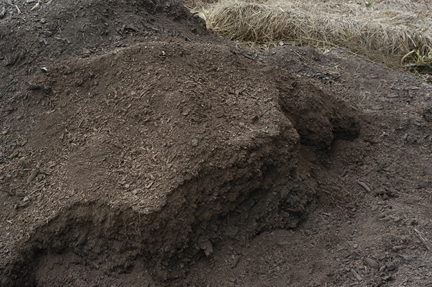Not all mulch is created equal. Types of mulch range from great to not-something-you’d-want-in your-garden.
The Compost Solution
If you’re looking for a rich, black mulch containing ample nutrients for your plants, the answer is simple—use garden or kitchen compost!
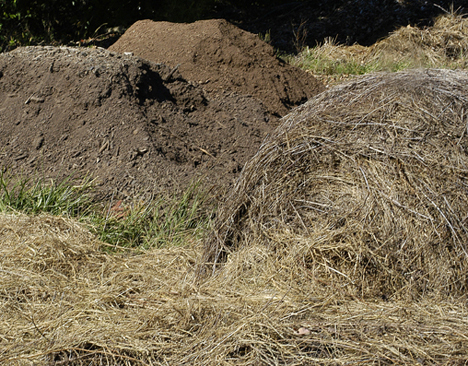
If you’re going to compost organic materials yourself, make sure to have just the right balance of brown (carbon-rich) and green (nitrogen-rich) materials, so that your compost will break down efficiently. If you don’t have a lot of material to work with and if quick-and-easy composting is of the utmost importance to you, you might want to invest in a compost tumbler. But here at Southern Exposure, we do it the old-fashioned way! If you, too, have an open-style bin, make sure to turn it with a garden fork every two weeks to aerate the pile and to move dry material from the outer edges to the center.
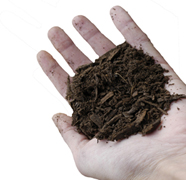
You’ll know when your compost is ready because it will look beautifully dark and crumbly, and should smell earthy. Still see an orange peel? It’s not done! You definitely should not be able to pick out any original ingredients. If you don’t have the time or means to make compost yourself, give your township a call. Many municipalities compost the yard waste they collect and then offer the finished product back to their residents.
Hay: Not Just for Horses…
…it’s also for your garden! Here at Southern Exposure, we often use hay and straw to mulch our crops.
Hay comes from grasses and legumes such as alfalfa or clover that are cut, dried, and used to feed farm animals. Straw, on the other hand, has little to no nutritional value for animals–it is made from dried, mostly-hollow stalks of grain. Straw and hay make for different mulching experiences.
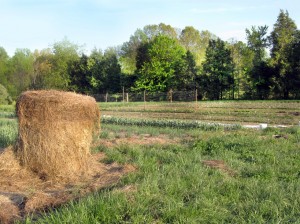
Hay is nice and heavy, so it is likely to stay put once placed in your garden. However, when mulching with hay, be aware that it could contain weed or grain seeds that may eventually sprout. This is not really an issue with straw, but straw is much lighter than hay, which means that you’ll have to use a lot more of it to get it to stick around come wind and rain.
Oak’s No Joke
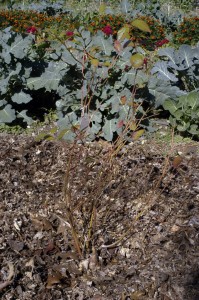
If you’re a fellow resident of Virginia, where live oaks are commonplace, you might want to try using oak leaves as mulch. Live oaks are classified as evergreens because they hold onto their leaves all winter long…but come springtime, keep your eyes peeled! You won’t have to look very hard to find fallen oak leaves in abundance, as live oaks drop their leaves over a two-week period each spring.
Oak leaves add acidity to soil, so make sure you’re using them on plants that can tolerate this. You can either directly mulch your garden with oak leaves, or compost them first (chopping them up with a lawn mower or other tool will help them to decompose faster, as will mixing them with nitrogen-rich materials).
The Electric Pine Needle Acid Test
Using pine needles as mulch, which is often called pine straw, is a good idea when you are looking to increase the acidity of your soil. Garlic, mint, onion, blueberry and tomato plants would appreciate this, as would azaleas, chrysanthemum, rhododendron, and roses.
And besides giving certain plants their acid fix, pine needles bind together to provide a weed-suppressing blanket that is unlikely to wash away with heavy rains.
Another great thing about using pine needles as mulch is that you can easily collect it yourself. Even if you don’t have pine trees on your property, neighbors with pines might happily agree to let you scoop needles off their grass—the needles’ high acidity makes for splotchy lawns, just make sure to consult with your arborist first.
Coulda Shoulda Wooda
Wood mulch is a common type of mulch because it’s good at suppressing weed growth. But if you’re planning on buying commercially produced wood mulch, be aware that it may be made out of trashed wood, which could add arsenic and other chemicals to your soil.
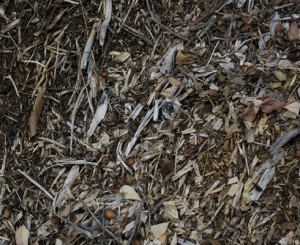
Also, if you want to avoid moldy mulch, using wood chips as mulch might not be the best choice. Now, some molds and fungi—natural aspects of the decomposition process for all organic material—are benign or even beneficial for plants. But others are nuisances. Case in point: wood mulch can breed a nasty mold called “shotgun” or “artillery” fungus, which leaves impossible-to-remove spores that look like balls of tar on homes and cars.
If you’re still into the idea of using wood mulch, why don’t you try sawdust? The founder of Southern Exposure originally used sawdust as mulch in his garden, and he had no problems with it.
Rubber Mulch: Old Tire Chunks on Your Plants?!
For instance, did you know that many types of mulch you can buy in the store are thickened with ground rubber, potentially from used tires? Though rubber mulch might be good for playgrounds (if you don’t mind exposing your kids to the chemicals components of artificial rubber, but hey—we’re not talking child rearing here), it simply does not belong in your garden.
The cons of using rubber as a mulch ingredient far outweigh the fact that rubber contains a small amount of nitrogen. Zinc, cadmium and other heavy metals from rubber mulch could seep into your soil. Plus, it stinks in the heat!
What’s Mulch Got To Do With It?
In conclusion, we just want to reiterate something you’ve hopefully already figured out—mulch is very important! All mulch types help soil and root health by retaining moisture, managing temperature, and preventing weed growth.
